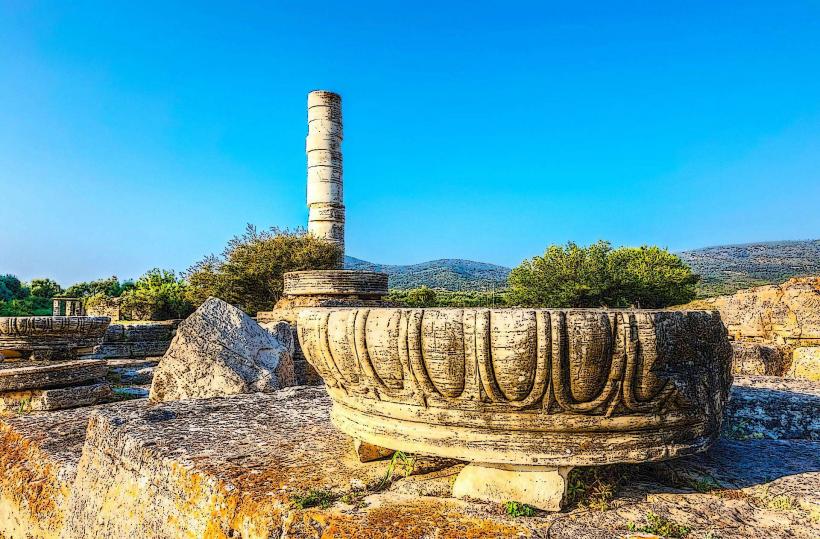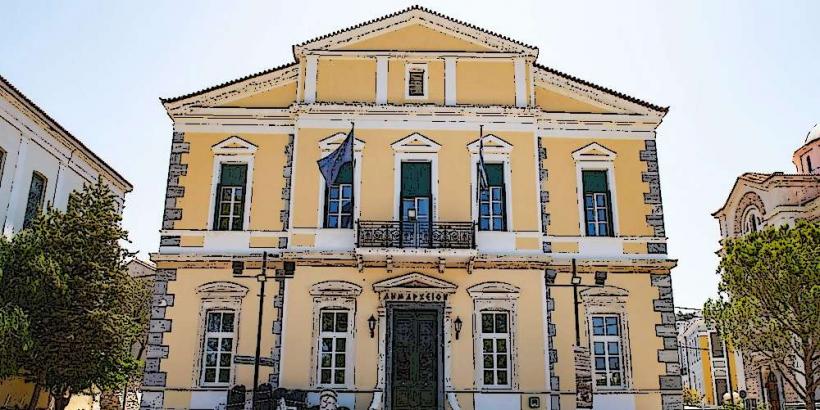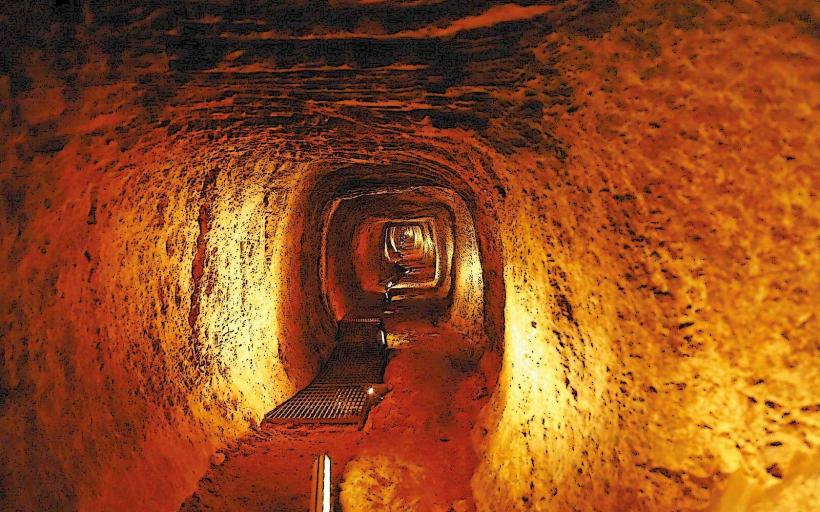Information
Landmark: PythagoreionCity: Samos
Country: Greece
Continent: Europe
Pythagoreion (also known as Pythagorean Archaeological Site) is an ancient city and archaeological site located on the island of Samos, Greece. The site is of great historical and cultural importance, primarily due to its association with the ancient Greek philosopher and mathematician Pythagoras, who is famous for the Pythagorean Theorem and his influence on mathematics, philosophy, and science. Pythagoreion is not only a tribute to Pythagoras but also a significant center of the ancient world that played a major role in the development of Greek civilization.
1. Location and Overview
- Location: Pythagoreion is located on the southern coast of Samos Island, near the modern-day village of Pythagoreio, which is named after the philosopher. It is approximately 13 kilometers from the island's capital, Vathy (Samos Town). The archaeological site lies near the sea, offering spectacular views of the Aegean Sea and surrounding landscapes.
- Accessibility: Visitors can reach Pythagoreion by car, taxi, or bus from Samos Town, as well as by walking or biking along scenic coastal routes. The site is one of the main tourist attractions on the island and is well-signposted for visitors.
2. Historical Significance
- Ancient Pythagoreion: The city of Pythagoreion (also known as Samos, or sometimes Samo) flourished during the Classical Period, particularly in the 6th century BCE when it became a center of philosophy, science, and mathematics. The city was established as a Greek polis and became renowned for its intellectual and cultural achievements.
- Pythagoras: The philosopher Pythagoras (c. 570–495 BCE) is one of the most important figures associated with this ancient site. He is best known for his contributions to mathematics, particularly the Pythagorean Theorem, and for founding the Pythagorean school of philosophy, which promoted the idea of the harmony of the cosmos and the interrelationship between numbers, music, and nature.
- Political Influence: In addition to being a philosophical hub, Pythagoreion was also a politically significant city. The city was governed by Pythagoras' followers, who implemented laws based on the philosopher’s teachings, including the idea of communal living and the pursuit of moral and intellectual enlightenment.
3. Archaeological Site and Features
- The Ancient City of Pythagoreion: The remains of the ancient city of Pythagoreion cover a large area and include several key structures, such as city walls, gates, residential houses, and public buildings. The city was originally designed with a grid plan, a typical feature of ancient Greek urban planning.
- The Temple of Hera: One of the most important religious sites in Pythagoreion was the Temple of Hera, located just outside the city. The temple was dedicated to Hera, the queen of the gods, and was one of the major religious centers in the ancient world. The temple’s foundation and remnants can still be seen today at the Heraion sanctuary.
- The Ancient Theatre: An important feature of Pythagoreion is its ancient theatre, which could accommodate thousands of spectators. The theatre was used for both performances and public gatherings, and it played an important role in the cultural and social life of the city. The preserved ruins of the theatre are a popular attraction for visitors to the site.
- The Aqueduct of Eupalinus: One of the most remarkable engineering feats of ancient Pythagoreion is the Aqueduct of Eupalinus (also called the Eupalinos Tunnel). This ancient tunnel, built in the 6th century BCE, was a water supply system that brought water from the mountains to the city of Pythagoreion. It is considered one of the greatest achievements of ancient engineering, as it was constructed entirely by hand, with workers digging from both ends to meet in the middle. The tunnel, which is still functional today, is about 1,030 meters long and showcases the ingenuity of ancient Greek engineers.
- The Gymnasium: Another significant structure in Pythagoreion is the gymnasium, which was an important social and educational space for the male citizens of the city. The gymnasium was used for physical training, but also for intellectual pursuits, as it was closely tied to the philosophy and teachings of Pythagoras and his followers.
4. Artifacts and Discoveries
- Inscriptions and Statuary: Archaeologists have uncovered several inscriptions and statues at the site, many of which are dedicated to various gods, heroes, and political leaders of the time. These artifacts help illuminate the religious and cultural practices of the people of Pythagoreion and provide insight into the daily life and governance of the city.
- Pottery and Figurines: Numerous examples of ancient pottery and figurines have been discovered at the site, many of which are typical of the Archaic and Classical periods in ancient Greek history. These artifacts offer a glimpse into the artistic styles of the time and reflect the everyday life and practices of the city’s inhabitants.
5. Modern-Day Significance
- UNESCO World Heritage Site: In 1992, Pythagoreion and the Heraion of Samos were designated as a UNESCO World Heritage Site for their exceptional contribution to the understanding of ancient Greek civilization. The site is recognized for its archaeological, historical, and cultural significance, particularly with regard to the development of philosophy, science, and urban planning in ancient Greece.
- Tourism: Today, Pythagoreion is a popular destination for tourists interested in Greek history and archaeology. The site is home to the Pythagoreion Archaeological Museum, which houses many of the finds from the site, including pottery, inscriptions, and sculptures. The museum offers an in-depth look at the history of the city and the philosophy of Pythagoras.
6. Pythagorean Theorem and Influence
- Pythagoras' Contributions: While there is limited evidence that Pythagoras himself directly influenced the construction of the city, the teachings of Pythagoras and his followers were integral to the intellectual climate of Pythagoreion. Pythagoras is most famous for his Pythagorean Theorem, a fundamental principle in geometry, which relates the lengths of the sides of a right-angled triangle. The concept of harmony and the belief in the importance of numbers and their relationship to the cosmos were central to Pythagorean philosophy.
- Pythagorean School: The Pythagorean school, based in the city, had a profound impact on the development of mathematics, music, and philosophy. Many of its principles influenced later Greek thinkers, including Plato and Aristotle, and continue to be studied and appreciated today.
7. Conclusion
Pythagoreion is a captivating archaeological site that offers a window into the intellectual and cultural heart of ancient Greece. With its association with Pythagoras and the remarkable achievements of its inhabitants, the site provides insight into the early development of Greek philosophy, mathematics, and urban planning. The ancient ruins, including the Aqueduct of Eupalinus, the theatre, and the temples, stand as testament to the ingenuity and cultural richness of this ancient city, making it one of the most significant archaeological sites in Greece. Today, Pythagoreion continues to inspire visitors and scholars alike, offering a glimpse into the roots of Western philosophy and science.




